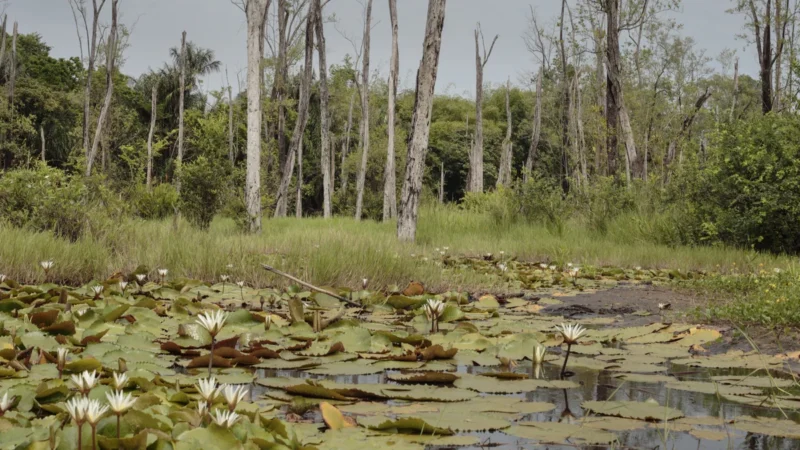Nature-Based Solutions for Climate Change: Enhancing Adaptation and Mitigation

Climate change poses unprecedented challenges, including rising temperatures, sea-level rise, and extreme weather events. To address these challenges, there is a growing recognition of the role of nature-based solutions in enhancing both adaptation and mitigation efforts. Nature-based solutions leverage the power of ecosystems and biodiversity to provide multiple benefits to society while also combating climate change.
1.Leveraging Ecosystem Services for Climate Adaptation
Nature-based solutions capitalize on the services provided by healthy ecosystems to enhance resilience to climate impacts. Wetlands, for instance, act as natural buffers against flooding and storm surges. Conserving and restoring wetlands can minimize the vulnerability of coastal communities to sea-level rise and extreme weather events. Similarly, urban green spaces can reduce urban heat island effects, providing cooler microclimates and improving the well-being of residents.
2.Carbon Mitigation Strategy
Forests, grasslands, and other natural ecosystems are invaluable in sequestering carbon dioxide from the atmosphere, thus mitigating climate change. Afforestation and reforestation efforts play a critical role in capturing carbon, while also providing habitats for diverse species. Mangroves and seagrass beds not only store carbon but also protect coastlines from erosion and provide essential fish habitats, supporting local livelihoods.
3.Biodiversity’s Role in Enhancing Resilience
Biodiverse ecosystems are more resilient to disturbances, making them better equipped to withstand the impacts of climate change. Diverse plant and animal species contribute to ecosystem stability and productivity. Coral reefs, for example, support marine biodiversity and act as natural barriers against storm surges, safeguarding coastal communities. Protecting biodiversity thus indirectly contributes to climate adaptation.
4.Integrating Sustainable Practices for Climate Solutions
Integrating sustainable land management practices enhances both adaptation and mitigation potential. Agroforestry systems, which combine trees with crops, not only sequester carbon but also improve soil health, water retention, and crop yields. Implementing regenerative agriculture techniques can enhance soil carbon sequestration while making agricultural systems more resilient to changing climate conditions.
5.Addressing Challenges in Implementing Nature-Based Solutions
While nature-based solutions offer promising benefits, challenges exist. Balancing conservation and development goals requires careful planning. Ensuring equitable access to nature-based solutions is vital to prevent environmental injustices. Additionally, monitoring and measuring the effectiveness of these solutions remain complex tasks.
we can conclude this, Nature-based solutions provide a holistic approach to climate change by simultaneously enhancing adaptation and mitigation efforts. By conserving and restoring ecosystems, we can harness their inherent resilience and capacity to sequester carbon. These solutions offer a way to address climate challenges while also promoting biodiversity, supporting livelihoods, and ensuring a sustainable future.
FAQs
1. What are nature-based solutions for climate change?
Nature-based solutions are approaches that utilize the power of ecosystems and biodiversity to address the challenges of climate change. These solutions involve conserving, restoring, and sustainably managing natural systems to enhance both adaptation to climate impacts and the mitigation of greenhouse gas emissions.
2. How do nature-based solutions help with climate adaptation?
Nature-based solutions enhance climate adaptation by leveraging the benefits of healthy ecosystems. For example, wetlands act as natural buffers against flooding and storm surges, while urban green spaces reduce heat island effects. These solutions enhance the resilience of communities to climate-related challenges.
3. How do nature-based solutions contribute to climate mitigation?
Nature-based solutions play a vital role in climate mitigation by sequestering carbon dioxide from the atmosphere. Forests, grasslands, and other ecosystems capture and store carbon, helping to mitigate the impacts of climate change. These solutions also support biodiversity and provide various co-benefits.
4. Are nature-based solutions suitable for urban areas?
Yes, nature-based solutions are highly applicable to urban areas. Urban green spaces, green roofs, and community gardens help mitigate urban heat island effects and improve air quality. Integrating nature into urban planning enhances the well-being of residents while also contributing to climate resilience.
5. What challenges do nature-based solutions face?
While nature-based solutions offer great promise, challenges include balancing development and conservation goals, ensuring equitable access to benefits, and effectively measuring their impact. Integrating these solutions into policy frameworks and addressing potential conflicts are essential steps toward their successful implementation.


